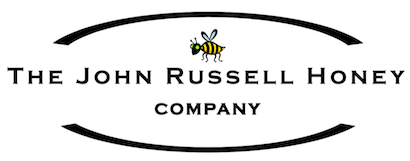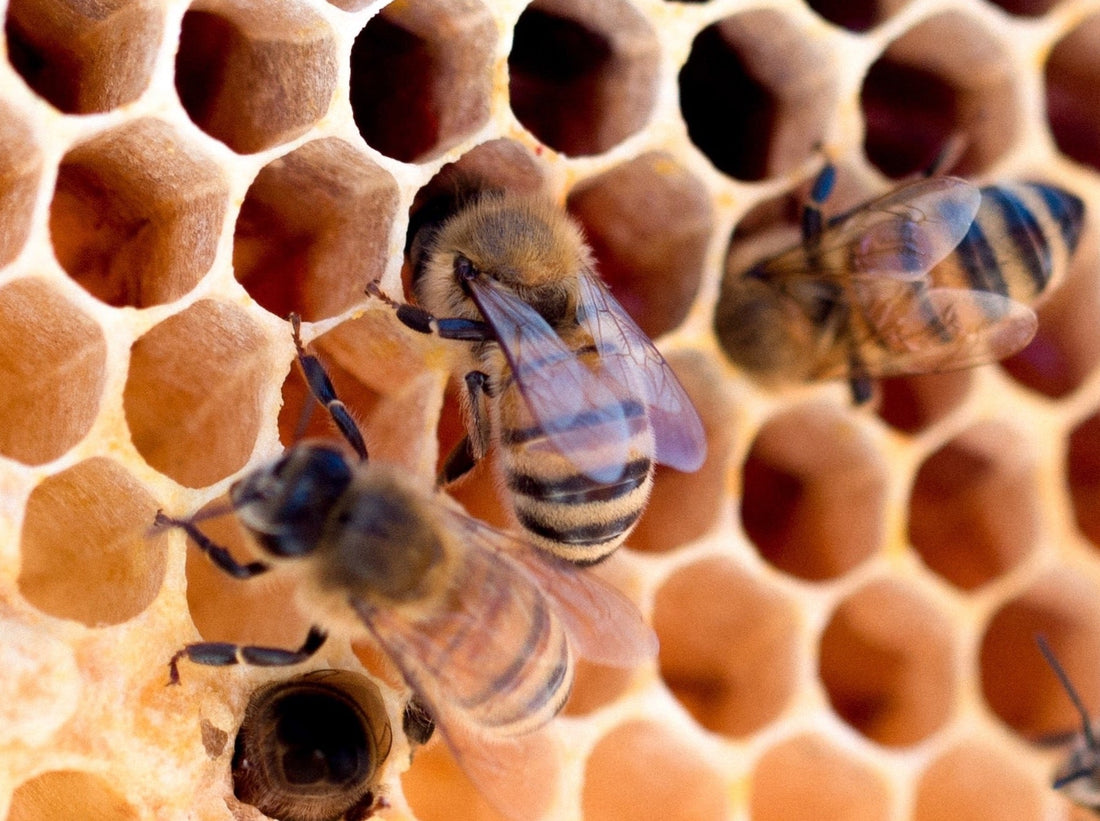What's In A Name
The labels on honey jars can be downright confusing for many people, especially when stressed out while grocery shopping and merely looking to find high quality food to feed yourself and your family members. Most likely you have seen labels like raw, unfiltered, pure, and organic. On top of that, many products, for example honey, may be labeled pasteurized honey or non-pasteurized honey and also unpasteurized honey. What does it all mean? And does it even matter anyway (because it’s all natural, right?) So, basically, what is the difference here?
To begin, let’s look at pure honey. Anything labeled as pure honey is required (at least in many countries) to be exactly that, 100% pure honey without any added ingredients like corn syrup (which is sometimes added to commercial honey products to save costs). Yet, even though the label says "pure honey" it does not tell you exactly how the honey is produced. It is generally considered a good idea to look for extra information to make sure that you are getting the benefits and value you want from the products that you are paying for (caveat emptor!).
Raw Deal
So then, what is the difference between raw honey and pure honey? This one is simple: the difference is that "raw" honey has not been heated or pasteurized higher than 118 degrees Fahrenheit (47.78 Celsius for the metric-inclined). Honey that has not been heated to this temperature keeps all of the naturally occurring enzymes, vitamins and minerals so that you can get the full benefits from eating raw honey.
There is a conflict of opinions however that true raw honey is unfiltered, and any bits of bees and wax should be left to settle and raft with the "clean" honey being drawn from a tap placed 16 inches or so higher than usual on the honey tank. As long as the honey has not been excessively, or flash heated, or micro filtered then what you are consuming is raw.
According to Healthline, a medical affairs team committed to ensuring the scientific accuracy and integrity of all its content, raw honey is honey as it exists in the beehive. It is made by extracting honey from the honeycombs of the hive and pouring it over a mesh or nylon cloth to separate the honey from impurities like dead bees or beeswax (beeswax is a product made from the honeycomb and other bees).
Organic honey is produced from the pollen of uncultivated plants or trees that have not been treated with any chemical pesticides or fertilized by humans. Bees typically fly up to 2 miles from the hive to look for flowers, so that all the flowers within the two-mile radius must be considered natural or native to the area for the honey to be truly organic. Honey that is labeled "organic" is not necessarily raw or minimally processed unless the label says so (check for certification!)
Unfiltered honey means that the honey has not been processed to remove small particles, often even the pollen. Filtered honey is not the same as strained honey which removes bee parts and other debris before it is poured into jars. Filtered honey still retains the pollen and other beneficial qualities of honey. However, it is also often heated to make the filtering process easier, but then the honey is no longer raw. Unfiltered honey is not raw unless the label says so. Choosing raw, unfiltered honey makes sure that most of the properties have been preserved.
But Wait, There's More
If you see a label that says natural honey, it means that the honey is pure, that it does not have any added colour, artificial flavour or synthetic substance added to it. It means that you are getting 100% honey (although it can be processed meaning that it has been pasteurized by applying heat to destroy sugar tolerant yeasts). That said, it is evidently not unusual for additives such as corn syrup to be added to industrial honey to reduce production costs.
Not long ago, the Canadian Food Inspection Agency discovered a large amount of "fake" honey that had been cut with cheap syrup and then imported as real honey. Yes, food fraud and fake honey is a thing, and recent samples from honey imports reveal that 22 percent of the samples had been laced with less expensive sugars like rice and sugar cane syrup. Apimondia 2019, The International Honey Industry conference: 40 percent of competition entries were rejected for contamination or adulteration! The Netflix series, Rotten features an excellent episode on counterfeit honey and how pervasive it has been in the international honey trade.
What if the label says regular honey? The production of regular honey involves a few more steps before bottling. Steps like micro-filtration, flash heating then rapid cooling, or pasteurization. Remember, we explained that pasteurizing honey means applying high heat up to 118 degrees Fahrenheit for a specific amount of time to destroy sugar-tolerant yeasts. Pasteurization extends the shelf life of the honey and makes it a smoother experience. Micro-filtering removes all traces of pollen from the honey making it less nutritious, but retards crystallization by removing any solids for crystals to grow on. While heating (even flash heating) may not always technically pasteurize the honey, it can degrade the flavour.
There is no requirement in Canada for honey to be pasteurized and many consumers prefer raw, unpasteurized honey because it has natural yeasts, enzymes and traces of pollen from local flowers and trees. Unlike pasteurizing milk which kills organisms perceived to be harmful, pasteurizing honey is not about food safety: it is about extending the shelf life of the honey as pasteurization slows down the natural process of granulation so that it remains in a liquid or pourable form longer (which is useful if it is dispensed from a squeeze bottle, or more easily measured when cooking or baking).
It's very normal for honey to granulate or crystallize over a period of time. When this happens, the honey begins to look cloudy and results in a separation with the liquid part on top of a more solid, crystalized bottom. You can easily return granulated honey to liquid by heating it up again. Even though pasteurization delays the granulation of honey, it does not stave it off forever and there is nothing wrong with granulated honey as it still maintains all the flavour and nutrition of its earlier liquid form.
Last Word
According to the Mayo clinic, the pasteurization of honey has no technical meaning and heating it does not provide any food safety advantage. In certain circumstances, pasteurized honey is required in brewing and baking specialty items where natural yeasts would interfere with the finished product. There has been a growing interest in unpasteurized honey because of its antioxidant properties, its antibacterial and antifungal properties, ability to help heal wounds, help for digestive issues and soothing a sore throat and cough. Since there is no requirement in Canada for honey to be pasteurized, you have a choice between many types of honey and what you go with is really up to your personal preferences.
It's always advised that you know where your food comes from, and, when it comes to honey, buying from your local beekeeper is a great way to do that. Asking questions about where the colonies are located, and how the honey is handled will ensure only the very best is on your table. Of course, for those that seek truly unprocessed, raw honey, actual honeycomb is definitely the way to go.
We are proud to deliver the absolute best unpasteurized, natural honey directly to your table. If you ever have any questions on how we handle our honey, raise and shepherd our bees, or just have questions about honey and the honeybees that produce it, email John Russell directly at honeyb@mymts.net, or reach him by phone at 204-612-2337.
References
Chiasson, A. (2019). "Fake honey still pouring into Canada, and local beekeepers are feeling the sting." CBC News. Retrieved from https://www.cbc.ca/news/canada/toronto/food-fraud-fake-honey-cfia-crackdown-1.5222486
Government of Canada. "Labeling requirements for honey." Retrieved from https://inspection.canada.ca/food-labels/labelling/industry/honey/eng/1625512297254/1625512297753
Manitoba Beekeepers’ Association (Feb. 2019). "Labeling information for non-federally registered honey." Retrieved from https://manitobabee.org/hive/2334/labelling-information-for-non-federally-registered-honey/
Mayo Clinic Transplant Dietician (2016). "Unpasteurized foods and raw honey. Mayo Clinic. Retrieved from https://connect.mayoclinic.org/blog/transplant/newsfeed-post/unpasteurized-foods-and-raw-honey/
Raman, R. (2018). "All about raw honey: How is it’s different than regular honey?" Healthline. Retrieved from https://www.healthline.com/nutrition/raw-honey-vs-regular
"Rotten" (2019). Netflix. Daniel Reutenik. https://www.imdb.com/title/tt7763662/
Wei, K. (2018). "Netflix’s ‘Rotten’ reveals the perils of global food production." EcoWatch. Retrieved from https://www.ecowatch.com/netflix-rotten-2549886352.html

